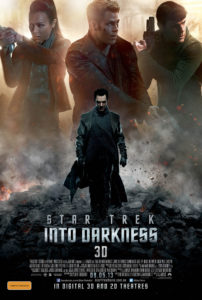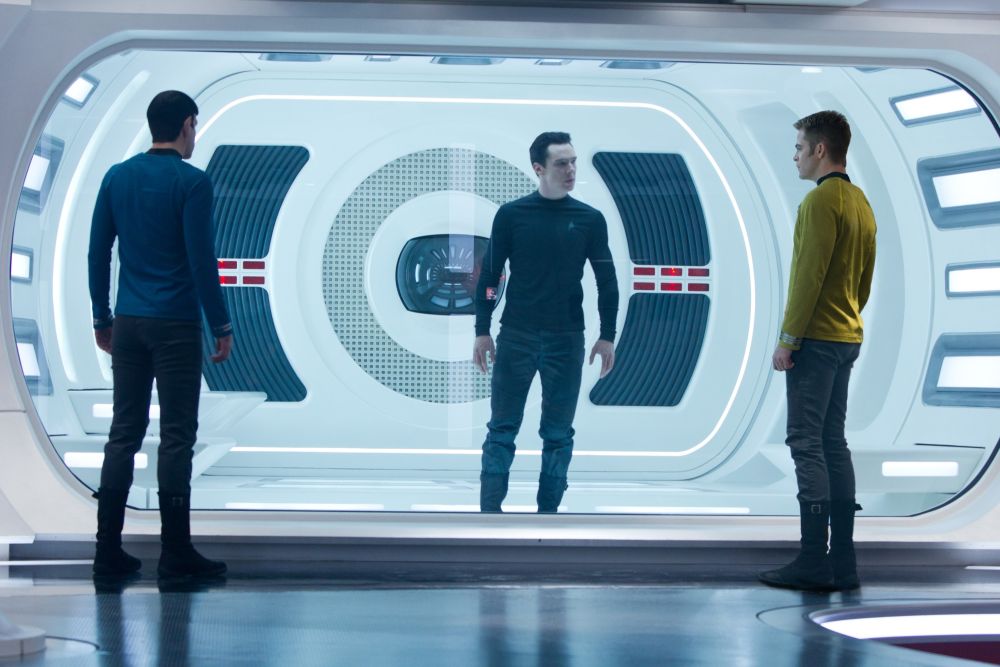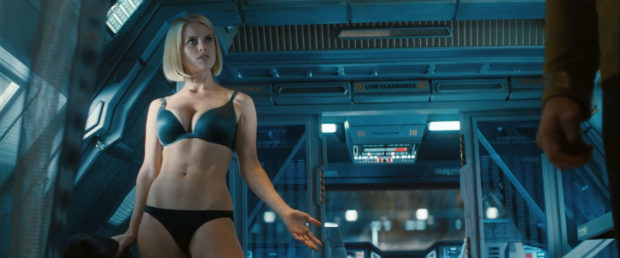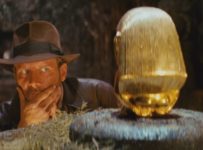As the crew of the Enterprise travel into darkness, audiences can rejoice that Trek is back and it’s brighter than ever.

Director: J.J. Abrams
Writer: Roberto Orci, Alex Kurtzman, Damon Lindelof
Runtime: 132 minutes
Starring: Chris Pine, Zachary Quinto, John Cho, Benedict Cumberbatch, Alice Eve, Bruce Greenwood, Simon Pegg, Zoe Saldana, Karl Urban, Peter Weller, Anton Yelchin
Distributor: Paramount
Country: US
Rating: ★★★★½
When J.J. Abrams rebooted Star Trek in 2009, it was a time of mixed emotions for fans. It was almost sacrilege to suggest that Captain Kirk could be recast, let alone sidelining over forty years worth of television and film history. Yet time’s a revelator, and Star Trek can now rightly be considered a genre classic in its own right, proving that it’s possible to have your geek cake and eat it too. The sequel doesn’t simply have the first instalment to live up to, but is now the sole torch-bearer of a franchise that has spanned 29 seasons of television and 11 other feature films. Star Trek Into Darkness thankfully shines bright enough to make the whole world unabashed Trekkies.
After breaking the Prime Directive on a pre-industrial planet and revealing the Enterprise to its primitive natives, James Kirk (Chris Pine) is demoted from Captain and has his ship taken away from him. His first officer and sometimes rival Spock (Zachary Quinto) is reassigned to another ship. However, when John Harrison (Benedict Cumberbatch), a terrorist from within the Federation, launches an attack on Starfleet itself, Kirk and his crew must lead a manhunt into enemy space and uncover things that should best remain hidden.
If Star Trek was Abrams distinguishing his Starfleet from the established continuity, then Star Trek Into Darkness is about deconstructing it. Orci, Kurtzman and Lindelof’s script takes what we know about the universe, and tears it down into tiny pieces, laying them out on display for examination. With these raw nerves exposed, Abrams takes his distinctive visual flair to them and remixes it into something that is partly familiar but largely disarming. What will surprise fans and followers is how much of some key original stories have found their way into this film. Even more surprising is the direction that they are taken, reworking them into a narrative that almost resembles elseworlds fan fiction. Much could be said about the sometimes heavy-handed references to real-world terrorism, but here it’s sci-fi at its most capable: offering to show the layers of the issue’s complexity in a safe ‘other’ world environment.
If a tribble of a quibble is to be had, it’s that some members of this wonderful cast don’t have enough time on screen. The difficulty with Star Trek‘s ensemble has always been one of equal camera time, and traditionally this has been divided between Kirk, Spock and “Bones” McCoy (Karl Urban). However, as soon as someone as charismatic and commanding as Cumberbatch joins the cast, the mix becomes a little less even. Yet he commands every moment that he is present, and is perhaps one of the best villains that the franchise has had to offer. There are a lot of moving pieces in this film, and some are easy to lose track (trek, even?) of. For instance, Scotty (Simon Pegg) has his own little sub-story, but it also results in the character being largely underused for much of the film. This is perhaps unsurprising given the darker tone of the film. New cast member Alice Eve (as familiar name Dr. Carol Marcus) has a mostly perfunctory role, although it also wouldn’t be Trek without some sexual temptation for the captain. Indeed, there’s a scene where he quite literally gets two lots of tail.
Yet what sets this apart from the Trek films that have come before is the sheer scale of the piece. Abrams uses every inch of the screen, signing it with his trademark lens flare whenever the frenetic pacing threatens to not cause a seizure. It’s as if the absence of any Trek from our screens, big or small, has been keenly felt and condensed down into a single feature film. Star Trek may have been in our lives since 1966, but Star Trek Into Darkness is firmly a movie of the now, and it is magnificent.
Star Trek Into Darkness is released in Australia on 9 May 2013 from Paramount.





